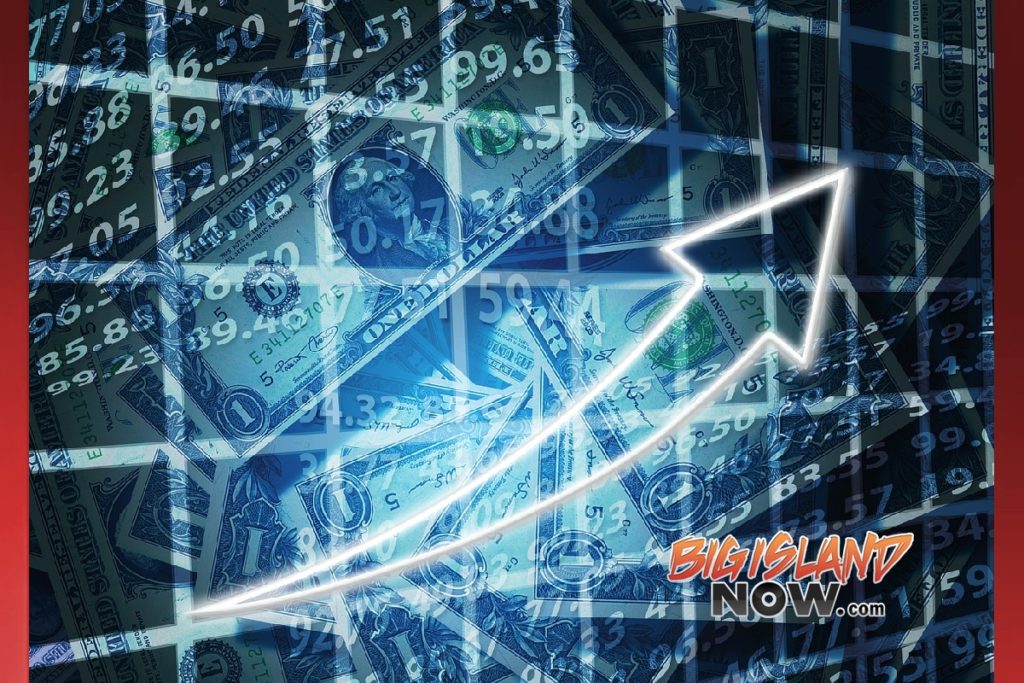DBEDT Predicts Improved Economy in 2018
 The Hawai‘i Department of Business, Economic Development and Tourism (DBEDT) released its first quarter 2018 Statistical and Economic Report, which shows the state’s overall economic condition in 2018 will be better than previously projected, due to the expected short-term increase in business and household income resulting from the Federal tax reform.
The Hawai‘i Department of Business, Economic Development and Tourism (DBEDT) released its first quarter 2018 Statistical and Economic Report, which shows the state’s overall economic condition in 2018 will be better than previously projected, due to the expected short-term increase in business and household income resulting from the Federal tax reform.
In 2017, Hawai‘i saw several record statistics in our local economy. During the fourth quarter of 2017, unemployment rates were the historical lowest for all the counties in the state, making Hawa‘ii the best labor market in the U.S. Statewide labor force, employment and payroll job count registered new historical high levels in 2017. Visitor arrivals reached 9.4 million, a new record year. Real estate market performed well with median home sale prices up for all the counties, sales volume all up except Kaua‘i County, with a 2.8% decrease for 2017.
Entering 2018, there are positive signs for our economy, including the financial sector distributing bonuses and a raised minimum wage rate. The state minimum wage increased to $10.10 per hour effective Jan. 1, 2018. The airlines will provide more than 13 million air seats to the state in 2018, a 9% increase from the previous year.
“We are happy to see the steady growth in our economy in the areas of tourism, professional services and healthcare industries,” said DBEDT Director Luis P. Salaveria. “Though our economic fundamentals are still positive, there are some challenges on our supply side, such as housing and labor availability, which limit the growth of our population as well as increase our cost of living.”
In 2017, the state gained 7,200 additional non-agriculture payroll jobs as compared with a year earlier. The increase in jobs mostly occurred in tourism-related industries. Retail trade and food services each added 2,100 jobs, accommodation added 1,100 hotel jobs, transportation, warehousing and utilities added 800 jobs. Beyond tourism, professional and business services experienced the largest job gains at 1,800 additional jobs, healthcare and social assistance increased 700 jobs. Educational services gained 400 jobs. However, a few industries continued losing jobs. State government lost 1,000 payroll jobs, wholesale trade lost 700 jobs, financial activities lost 500 jobs, and manufacturing and construction each lost 200 jobs in 2017.
The value of private building permits decreased 3.5% in 2017. The value of residential permits increased 3.9%t, commercial and industrial permit value increased 87.6%, and value of additions and alterations decreased by 22.4%.
The most recent forecast (January 2018) for the U.S. and the world indicates that most of the economies of the world, especially those our visitors are coming from, will experience continued economic growth in 2018 and 2019. The U.S. economy is expected to grow by 2.7% in 2018 and 2.4% in 2019.
DBEDT revised the visitor industry forecast upward again with visitor arrivals now growing at 2.7% for 2018, 1.6% for 2019 and 1.4%t for 2020 and 2021. Growth of visitor expenditures will be at 4.5% for 2018, 3.7% for 2019, and 3.5% for 2020 and 2021.
“The scheduled air seats on flights to Hawai‘i in 2018 are expected to increase by 9%, with capacity directly to the Neighbor Islands expected to increase by more than 22% this year,” said Chief State Economist Dr. Eugene Tian. “The passenger count in January 2018 has shown some effects of the changes—passenger count from the U.S. mainland increased 19.8% for the Big Island, 19.1% for Kaua‘i, 4% for Maui, and 6%.”
DBEDT revised its projection for Hawai‘i’s economic growth, as measured by the real gross domestic product (GDP), upward from the fourth quarter 2017 projection to 1.7% for 2018, 1.6%for 2019, and 1.4% for 2020 and 2021.
DBEDT revised its projection on non-farm payroll job count upward to 1% in 2018, 0.9% for 2019 and 2020, 0.8% for 2021. The unemployment rate projection now is lower for 2018 at 2.6% and will gradually increase to 3.4% by 2021.
DBEDT revised the nominal personal income growth rates upward from the previous quarter forecast to 3.6% for 2018, 3.9% for 2019, 4.0% for 2020 and 2021. DBEDT expects consumer inflation, as measured by the Honolulu Consumer Price Index, will be higher than previously projected, now at 2.4% for 2018, and will gradually increase to 3.1% by 2021. Though nominal personal income will be higher, due to the faster increase in consumer price, real personal income projections remains unchanged from the previous quarter forecast at 1.5% for 2018, and will be at a similar rate for the next few years.
The DBEDT Quarterly Statistical and Economic Report contains more than 120 tables of the most recent quarterly data on Hawai‘i’s economy as well as narrative explanations of the trends in these data.
RELATED LINK
Hawai‘i County’s Monthly Economic Indicators through December 2017











